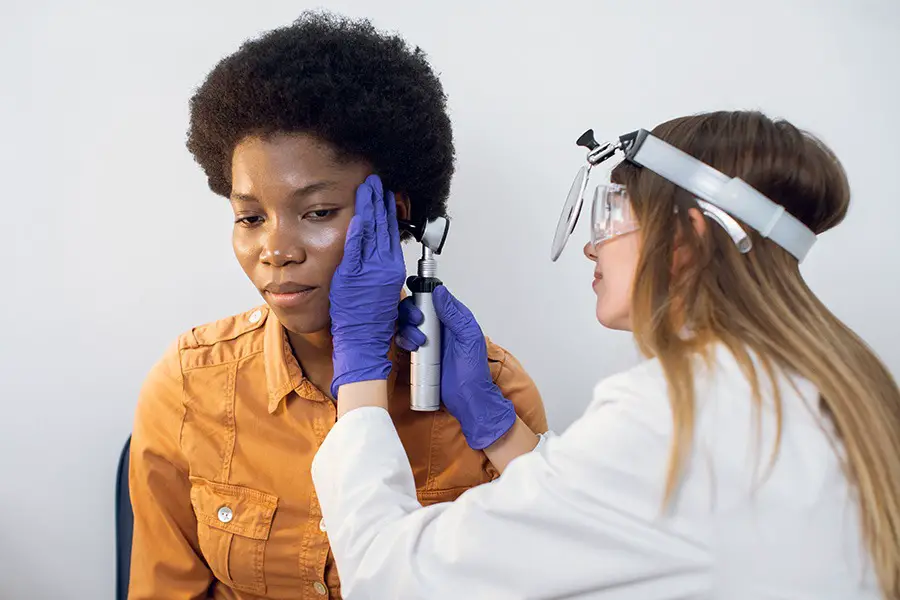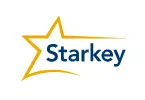Introduction
Navigating life with sensorineural hearing loss (SNHL) can present considerable obstacles, particularly for older adults. Thankfully, the advancements in technology have been pivotal in developing resources that improve the lives of these individuals. This voyage into the realm of SNHL technology will examine hearing aids, cochlear implants, mobile apps, assistive devices, and the promising domains of artificial intelligence and machine learning.
This journey doesn’t solely focus on technology but also emphasizes empowerment and self-reliance for seniors living with SNHL. As they negotiate the difficulties of hearing loss, the remarkable strides in this field offer cause for future anticipation. This blog post endeavors to highlight these technologies, illuminating their transformative potential while deliberating on the future of this thrilling field.
This blog post, although informative and detailed, does not substitute professional medical counsel. Please consult healthcare professionals for specific suggestions or diagnoses. Now, let’s embark on this technological voyage, investigating the influence of various technologies on the lives of seniors with SNHL.
Professional Re-Chargeable Hearing Aid
Experience Exceptional Sound Quality with Vivtone RIC02, a professional RIC hearing aid featuring a receiver in the canal design. Enjoy superior sound fidelity, reduced distortion, and minimal feedback. With a remarkable 51dB peak sound gain, it surpasses many other devices, catering to a wide range of hearing loss levels.
State-of-the-Art Technology awaits you with Vivtone RIC02. Designed with US-made components from renowned brands like Intricon and Knowles, this advanced device offers exceptional quality at a fraction of the cost. The built-in 30mAh steel-sealed lithium polymer battery charges rapidly in just 1.5 hours and provides an impressive battery life of over 20 hours.
Reliability and Water Resistance come hand in hand with the Vivtone RIC02. Secure your device with the included lanyard and clip, preventing accidental loss. With an IP65 rating, these hearing aids are resistant to water, sweat, and raindrops, assuring longevity and durability. Give the perfect gift to your seniors and loved ones, as this device combines functionality with an appealing appearance and packaging.
Hearing Aids and Sensorineural Hearing Loss: A Technological Voyage
Hearing aids have witnessed significant evolution over time. From archaic ear trumpets to today’s advanced digital devices, they remain a prevalent method for treating sensorineural hearing loss. Contemporary hearing aids are equipped with capabilities such as noise suppression, directional microphones, and compatibility with other digital gadgets, markedly improving auditory experiences for those with SNHL.
Peering into the future, we anticipate further advancements providing even more intricate solutions. Active research into “smart” hearing aids capable of analyzing the sound environment and adjusting in real-time exemplifies this. These perpetual enhancements underscore the resilience and ingenuity of human innovation, devoted to improving the lives of those living with SNHL.
The Prospective Path of Cochlear Implants for Sensorineural Hearing Loss
Cochlear implants, another groundbreaking invention, have radically changed treatment for severe to profound sensorineural hearing loss. These devices don’t merely amplify sound like hearing aids, but they bypass the damaged part of the ear and directly stimulate the auditory nerve.
Looking ahead, the horizon of cochlear implant technology is filled with potential. Research is presently concentrated on enhancing the technology to refine sound quality, improve speech understanding in noisy environments, and even embed artificial intelligence to optimize the user’s auditory experience. Further exploration into combining cochlear implants with drug delivery systems to safeguard or regenerate auditory nerve cells emphasizes the fascinating advancements on the horizon.
Smartphone Apps: Supporting the Sensorineural Hearing Loss Community
The emergence of smartphones has inaugurated a new dimension of assistive technology for individuals with sensorineural hearing loss. A range of apps now provide capabilities such as instant captioning, sign language interpretation, and sound amplification. For seniors, who may experience other forms of age-related sensory deterioration, the user-friendliness and accessibility of these apps render them a potent tool.
As app technology evolves, future versions promise even more personalized and user-friendly alternatives. For instance, apps could be designed to ‘learn’ from the user’s behavior and automatically adjust the settings of connected devices based on different environments. The increasing incorporation of health monitoring in smartphones may also lead to apps that supervise auditory health and offer alerts or recommendations, making smartphones an increasingly vital ally for seniors with SNHL.
Technological Innovations: Assistive Devices for Sensorineural Hearing Loss
Apart from hearing aids and cochlear implants, a wide array of assistive listening devices (ALDs) are available to simplify daily life for seniors with SNHL. These include amplified phones, television listening systems, and alerting devices using visual cues or vibrations for alarms and doorbells. Technological advancements have also spawned FM systems and induction loop systems, which offer significant benefits in challenging listening environments like theaters or lecture halls.
Assistive devices validate howtechnology can adapt to meet specific needs. For seniors with SNHL, these devices add a layer of ease and comfort in both the home and public environments. As we continue to explore the limits of technological capabilities, we can anticipate a future teeming with more innovative and tailored solutions designed to enhance the day-to-day lives of individuals with SNHL.
Harnessing AI and Machine Learning to Transform Sensorineural Hearing Loss Treatment
AI and machine learning embody an exhilarating frontier in the realm of sensorineural hearing loss. Current exploration in AI technology aims to enhance hearing aid functionality by enabling these devices to learn from user preferences and adjust accordingly. Besides, AI is being utilized in the development of sophisticated speech recognition systems, which could be a major breakthrough for individuals with SNHL.
Conversely, machine learning algorithms are used to predict the success of cochlear implantation and customize the device programming to individual patients. This approach could ensure improved outcomes and patient satisfaction.
As we continue to unlock the potentials of AI and machine learning, their application in SNHL treatment could dramatically alter the field, enabling treatments to be more efficient and personalized than ever before.
Triumph Over Sensorineural Hearing Loss: Children’s Success Stories
Despite the challenges related to sensorineural hearing loss, numerous children showcase impressive resilience and determination. Many accounts exist of children with SNHL who, backed by early interventions, assistive technology, and educational accommodations, excel academically, thrive socially, and achieve remarkable success. These stories highlight the potential that exists when obstacles are removed and adequate support is provided.
These success stories, while inspiring, should not be seen as exceptions but as achievable results. They emphasize the importance of comprehensive support systems and the transformative power of resilience, underlining the need for widespread, equitable access to interventions and resources for children with SNHL.
QUIZ - CURRENT RESEARCH ON HEARING LOSS
Conclusion
This exploration into the technological advancements for seniors with sensorineural hearing loss reveals a vibrant and rapidly progressing field. It’s an arena where creativity and empathy converge, as developers and researchers tirelessly strive to enhance the quality of life for individuals with SNHL.
The relentless progress in hearing aids, cochlear implants, smartphone apps, assistive devices
, and the ongoing research in AI and machine learning all hint at a future where sensorineural hearing loss no longer forms a barrier to communication and a fulfilling life. They forecast a future where technology functions not only as a tool but also as a companion, aiding in traversing the auditory world.
As we move ahead, staying informed about these advancements becomes crucial. It’s not just about being aware of the latest devices or apps; it’s about understanding these technologies’ capabilities and how they can cater to unique needs. It’s about maximizing the benefits of these innovations as we strive for a world free of barriers for those with SNHL.
While celebrating these advancements, we should also underscore the need for continued research and investment in this field. Only through persistent innovation can we continue to enhance the lives of seniors with SNHL.
In conclusion, the impressive progress in this field offers a reason for future optimism. It stands as a testament to human resilience and ingenuity, committed to improving the lives of those living with SNHL. This is the journey we are undertaking, and it’s a journey that promises a more inclusive and accessible world.

Decoding Silence: An Analytical View on the Advances in Conductive Hearing Loss Research and Treatment
This analytical article sheds light on conductive hearing loss, offering an in-depth exploration of its genetic factors, treatment advances, and promising experimental therapies.

Embracing the Melody of Life: Navigating the Journey with Conductive Hearing Loss
A blog post delving into the experiences and challenges of living with conductive hearing loss, discussing its impact on everyday life, social interactions, mental health, and the potential benefits of hearing aids and cochlear implants.





